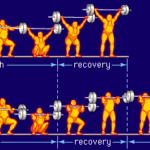Track and field are some of the oldest and most traditional sports, with its roots going back to ancient times. The running track has generally remained quite simple through decades: an oval where athletes test their speed, endurance, and agility. However, in a world where technology is busy transforming nearly every other aspect of our lives, Feldspar is standing against the status quo with the world’s first sensor-enabled running track. This development has promised to revolutionise athlete performance and fan experience as well, ushering in a new era for the sport.
A Long Overdue Innovation
Although the standard running track, as we understand it today, has not seen a significant technological advancement for over 50 years, why exactly would something as simple as a running track ever need to innovate? How could one radically evolve the idea of running around in circles? Yet that is precisely the question to which Feldspar wants an answer, as it envisions new horizons and creative possibilities through track and field.
For the first time, integrated sensing technologies will capture athletes’ footsteps directly on the track, transforming performance analysis through real-time data. Feldspar’s performance running track will incorporate advanced sensors and camera-based methods to measure movement, bringing new levels of precision in analysing running performance. This patent-pending technology will enable athletes to achieve faster running speeds, beyond what is currently possible, and push the boundaries of human performance.
Sensor-Equipped Trails: What They Do
At the core of Feldspar’s innovation is the embedded sensing technology at track level. The sensor technology is designed to pick up and analyse an athlete’s footfall at that moment, hence providing the athlete with invaluable performance data that would not have been realised otherwise. Some of this data include aspects of stride length, foot placement, speed, and acceleration.
It could then, with AI-driven analytics, be utilised for the optimisation of training programs with a potential for athletes to fine-tune techniques and possibly reach running speeds never before seen. Performance analysis can help not only in improving individual performance but also in shaping preparation for future competitions. Furthermore, the AI-powered data analytics tool can transform coaching by allowing athletes to train more effectively, adjust competition strategies, and identify potential injury risks based on granular, real-time data.
Transforming the Fan Experience
Feldspar’s innovation isn’t just about improvement in the performance of the athletes; the experience of the fans could also be further enhanced. The data collected by the sensors in real-time can be shown in visually appealing ways which will make the sport of track and field events far more interesting for the audience. Imagine a race where, as a spectator, you can see live stats with a data-driven experience of each performance of the athletes, just like what you get from watching a football or basketball game.
This could be real-time metrics like current speed, expected finish time, or even data such as heart rate. Offering complex and historically hard-to-access data, such as stride length, acceleration rate, and max velocity in real-time, this technology has the potential to revolutionise the spectator experience at live sports events and attract new enthusiasts who value innovative, visually captivating, and tech-driven premier sports entertainment.
Making track and field more interactive and visually appealing should help Feldspar attract a bigger audience and bring the sport into the digital age. This could change the game for how dynamic and data-rich track and field events will be.
The Balance of Technology and Tradition
As much as this combination of technology and sport raises a number of eyebrows in the beginning, Feldspar’s very premise boils down to simply adding value to the basic ingredients of the game: athlete performance and fan enjoyment. In a world where technology often disrupts, Feldspar uses it as a tool to make athletes’ and spectators’ experiences richer. The trick will be to uphold the sport’s integrity while using these new tools in a way that pushes the envelope of possibility.
Perhaps this innovation might just set a trend for other sports as well, where old practices are mixed with new technology for better performance and engagement. Moving ahead, the balance between technology and tradition within sports is going to be a big part of ensuring that the sports keep their core roots while evolving with time.


